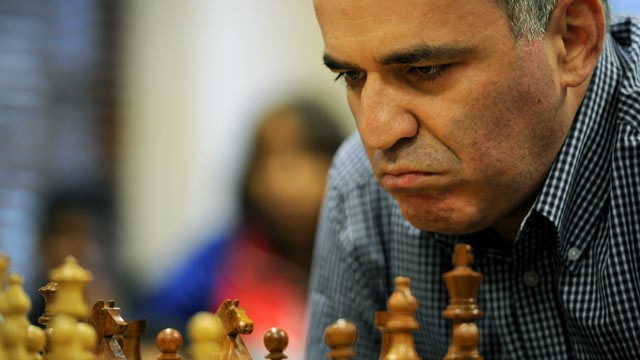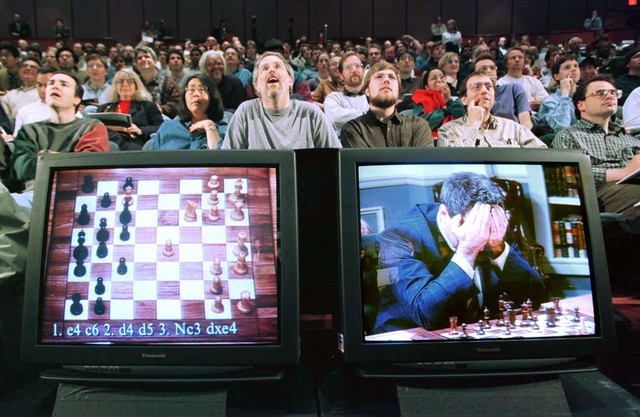May 11, 1997: Kasparov grandmaster is defeated by supercomputer Deep Blue
On May 11, 1997, IBM's Deep Blue supercomputer beat the Russian chess champion, Garry Kimovich Kasparov.
On May 11, 1997, IBM's Deep Blue supercomputer beat the Russian chess champion, Garry Kimovich Kasparov. He is arguably the strongest player in history with the ELO 2851, the highest ranking in about 20 years from 1985 to 2005 and the world champion chess champion from 1985 to 1993.
Earlier in 1996, Deep Blue supercomputer was tested with Kasparov. The computer won the first game, but then Kasparov won the final. By 1997, the IBM company along with a new upgrade of Deep Blue was determined to defeat Kasparov again. They launched a new version of the software that was much improved with the hardware supercomputer consisting of multiple processors running in parallel. American chess expert Joel Benjamin is an analyst and adviser to countries to start a battle for Deep Blue.

Grandmaster Garry Kimovich Kasparov.
IBM's determination that Deep Blue was designed specifically to " fight Kasparov ", all the opening moves that Kasaprov used to use were installed in the machine dictionary. And this time they succeeded, in the match 6 Deep Blue took Kasparov with the score 3.5-2.5. In the final game, Deep Blue discovered Kasparov's mistake from the country to start the game and decided to try to break Kasparov's posture from the start of the game, so Kasparov would eventually surrender.

He failed in the Deep Blue supercomputer in 1997.
The 1997 match was broadcast live to millions of people. According to the agreement, the winning of Kasparov, founding team Deep Blue received $ 700,000, while Kasparov received $ 400,000. IBM alone sought profit through advertising reached 50 million USD.
The way people and computers play chess is completely different . People choose their moves after evaluating a minimum number of options that he thinks are the most reasonable. And the computer does not have the ability to intuitively, it in turn mechanically approves all the options that can be taken on the board, then by the method of elimination, choose the plan it thinks is the best. But the number of options is extremely large.

IBM's Deep Blue supercomputer is currently on display in a museum.
Before a chess post, for example, with 30 countries that can go legally, people choose empirically and intuitively some of the options he thinks are the most plausible, calculate its evolution after 5-6 countries or longer depending on the level, then decide the move. Computers are different, it in turn approves the possible evolution of all 30 alternatives, including the " silly " ones, until the end of the game. For example, after each move can have 30 countries responding to the enemy, the machine must calculate the number of moves after one country is 30x30 = 900.
If each option is pre-calculated with a length of only 5 countries, then the number of moves is 3010 = 590,490,000,000,000. But each option taken into account when determining the winning or losing game of the game can average 20-40 countries (!). So this will be the clash between one side of the human intuition and the other is the superhuman computing speed of the computer (reviewing millions of flags in a second).
- Computers only need 72 hours to play chess to reach the grandmaster level
- I was not surprised when the AI defeated the people on the Go board then destroyed the world
- IBM spent $ 1 billion on new supercomputers
- Blue Gene / L supercomputer set a new record
- Video: The process of making the most expensive watch in the world
- Deep blue of sea water is a sign of death
- Australia has a supercomputer worth 45.4 million USD
- China announced the world's most powerful supercomputer
- Japan will build the world's fastest supercomputer
- IBM's supercomputer set a new record
- Chinese supercomputer
- Japan built the world's fastest supercomputer
 Biography of hero Vu A Dinh
Biography of hero Vu A Dinh History of hematology
History of hematology Who is Mr. Tam Da 'Phuc-Loc-Tho' and what does it mean?
Who is Mr. Tam Da 'Phuc-Loc-Tho' and what does it mean? Unbelievable facts about the history of the oil and gas industry: Gasoline used to be cheaper than water, so abundant that it had to be dumped into the river...
Unbelievable facts about the history of the oil and gas industry: Gasoline used to be cheaper than water, so abundant that it had to be dumped into the river...